Search
Search Results
-
Biosynthesis of TiO2 Nanoparticles and Their Application as Catalyst in Biodiesel Production
Titanium dioxide nanoparticles (TiO2 NPs) are capturing great interest worldwide with vast applications in various areas. However, their conventional...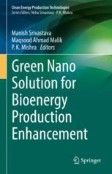
-
Expanding the horizons of nanotechnology in agriculture: recent advances, challenges and future perspectives
The speedy progress towards the utilization of nanomaterials (NMs) is being extensively carried out in the fields of agriculture and food industry...

-
Nanostructures for Antimicrobial and Antibiofilm Photodynamic Therapy
Unprecedented explosion of research in the field of nanotechnology has gained importance in the treatment, prevention, and eradication of...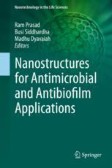
-
Layered double hydroxides as heterogeneous catalyst systems in the cross-coupling reactions: an overview
Layered double hydroxides (LDHs) are recognized as two-dimensional (2D) clay materials, which comprise the interlayer anions and host layers with a...

-
Sources and Health Risks of Rare Earth Elements in Waters
Anthropogenic rare earth elements widely used in high-technology applications are prevalent in the aquatic environment, thus constituting emerging...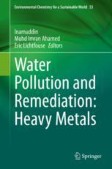
-
Applications of Nanoparticles in Wastewater Treatment
High-quality water is the most sought-after resource for human survival. Various natural and anthropogenic activities have contributed to groundwater...
-
Nanosensors for Foods
Nanotechnology, as being a branch of science taking the advantage of the unique chemical and physical properties of matter on the nanoscale, has a...
-
Clay-Based Nanocomposites: Potential Materials for Water Treatment Applications
Water treatment with its current level of pollution and increased complexity of pollutants has become a major concern and grand challenge for...
-
Nanoparticles and Their Role in Bioenergy Production
With the advent of industrialization and globalization, the consumption of energy sources has reached a pinnacle from where the great minds have...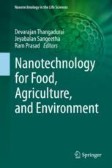
-
Solution-state nuclear magnetic resonance spectroscopy of crystalline cellulosic materials using a direct dissolution ionic liquid electrolyte
Owing to its high sustainable production capacity, cellulose represents a valuable feedstock for the development of more sustainable alternatives to...

-
Nanobiosensors: A Novel Approach in Precision Agriculture
The interdisciplinary nanobiosensors have endless applications in agriculture which directly and indirectly enhance the agricultural yield. After...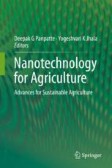
-
Potential of Biogenic Plant-Mediated Copper and Copper Oxide Nanostructured Nanoparticles and Their Utility
Copper and copper oxide nanoparticles (Cu NPs) were synthesized using plant resource extract as reducing, stabilizing, cap**, chelating, and...
-
Reductive amination using cobalt-based nanoparticles for synthesis of amines
Reductive aminations are an essential class of reactions widely applied for the preparation of different kinds of amines, as well as a number of...

-
Engineered Nanoparticles for Increasing Micronutrient Use Efficiency
Micronutrients are an important class of trace elements required by both plants and animals. With increasing food demands and limited land available...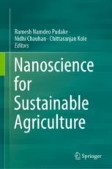
-
Is Nanofood Safe?
Production of an assortment of safe and quality food-related products that will satisfy the demands of modern society (respecting economic,...
-
Challenges of Engineering Biomimetic Dental and Paradental Tissues
Background:Loss of the dental and paradental tissues resulting from trauma, caries or from systemic diseases considered as one of the most...

-
Mechanism of Action of Nanopesticide Derived from Microorganism for the Alleviation of Abiotic and Biotic Stress Affecting Crop Productivity
Rise in the human population, damage of arable land, resistance of pest and diseases, decline inaccessibility of water for agriculture and climate...
-
Effects of Nanoparticles on Germination, Growth, and Plant Crop Development
The use of nanotechnologies in agricultural systems has been widely promoted. Nanomaterials have been proposed as a useful tool for the improvement...
-
How Technology Can Help?
An increased worldwide population will lead to significantly higher global demands for food, water, and arable land. A projected increase of 70% in...
-
Nanotechnology for Aquaculture
As a part of sustainable culture, aquaculture is objectively a very promising activity comparing to other livestock production industries....
